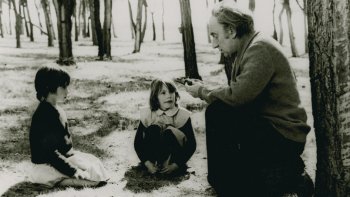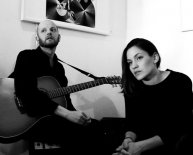
Spanish lessons torrent
 Released in 1973, in the dying days of General Franco’s forty-year dictatorship, The Spirit of the Beehive soon established itself as the consummate masterpiece of Spanish cinema. Yet, strangely, many of the gifted artists who collaborated on Víctor Erice’s first feature, an atmospheric exploration of a child’s experience in a bleak village just after the civil war, have had troubled afterlives. Erice himself, acclaimed by critics as Spain’s greatest auteur, has completed only two features since (The South, another period drama, in 1982, and Quince Tree of the Sun/Dream of Light, a documentary on a painter, in 1983). The career of Luís Cuadrado, the creator of the luminous cinematography, was tragically cut short by blindness. Ana Torrent, the six-year-old star, remains haunted by the role that made her a Spanish icon. In 2003, on the thirtieth anniversary of The Spirit of the Beehive’s release, she posed for the poster for the San Sebastián Film Festival. Re-creating a scene she had shot so many years before, she stood solemn faced on the railway tracks. Erice has said, "When I’ve finished a film, it’s no longer mine—it belongs to the people." Surely few films have had such an enduring effect on both their makers and their audience.
Released in 1973, in the dying days of General Franco’s forty-year dictatorship, The Spirit of the Beehive soon established itself as the consummate masterpiece of Spanish cinema. Yet, strangely, many of the gifted artists who collaborated on Víctor Erice’s first feature, an atmospheric exploration of a child’s experience in a bleak village just after the civil war, have had troubled afterlives. Erice himself, acclaimed by critics as Spain’s greatest auteur, has completed only two features since (The South, another period drama, in 1982, and Quince Tree of the Sun/Dream of Light, a documentary on a painter, in 1983). The career of Luís Cuadrado, the creator of the luminous cinematography, was tragically cut short by blindness. Ana Torrent, the six-year-old star, remains haunted by the role that made her a Spanish icon. In 2003, on the thirtieth anniversary of The Spirit of the Beehive’s release, she posed for the poster for the San Sebastián Film Festival. Re-creating a scene she had shot so many years before, she stood solemn faced on the railway tracks. Erice has said, "When I’ve finished a film, it’s no longer mine—it belongs to the people." Surely few films have had such an enduring effect on both their makers and their audience.
The Spirit of the Beehive was controversial from the start. Although it won the main prize at San Sebastián on its release, the jury’s enthusiasm was not shared by all the public. Some of the audience, restless at the film’s slow pace, even booed. Yet The Spirit of the Beehive is a classic example of one strand of Spanish filmmaking at that time. Like many repressive regimes, Francoism attempted to use cinema to change its negative image abroad and to create the impression that freedom of expression was permitted. By producing some internationally successful "quality" films, the regime also hoped to raise the status of Spanish cinema generally, which was at that time dominated by crude, mainstream comedies. By the early seventies, these policies had led to the production and export of many experimental and even discreetly oppositional films, although, of course, no overtly leftist movies could be made. The gaping holes in the plot of The Spirit of the Beehive and the mysterious motivations of its characters are typical of this "Francoist aesthetic, " a term used to describe artistically ambitious movies of the time that made use of fantasy and allegory. These characteristics, which remain so magical to modern audiences, were used in the period as a form of indirect critique.

















